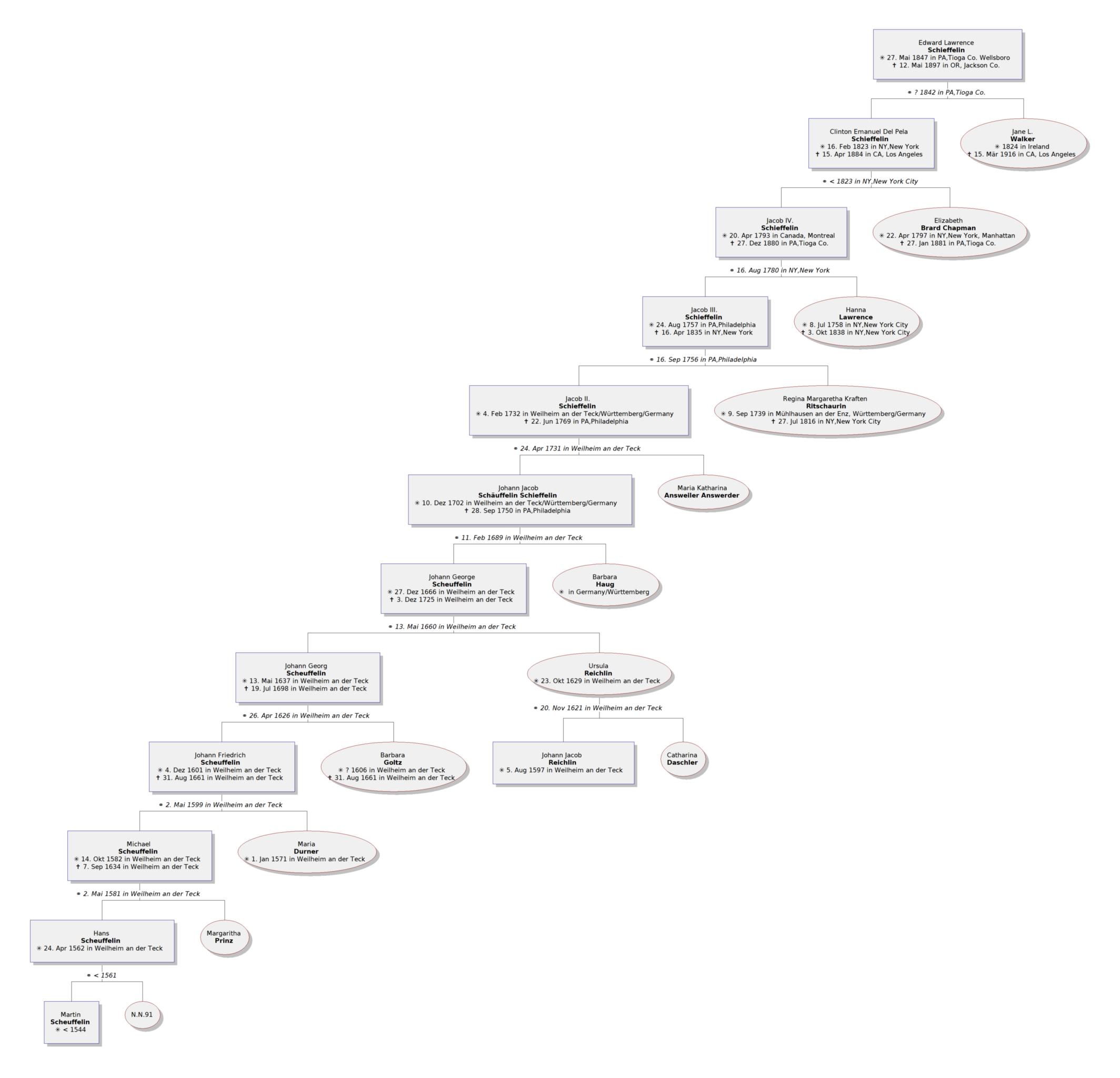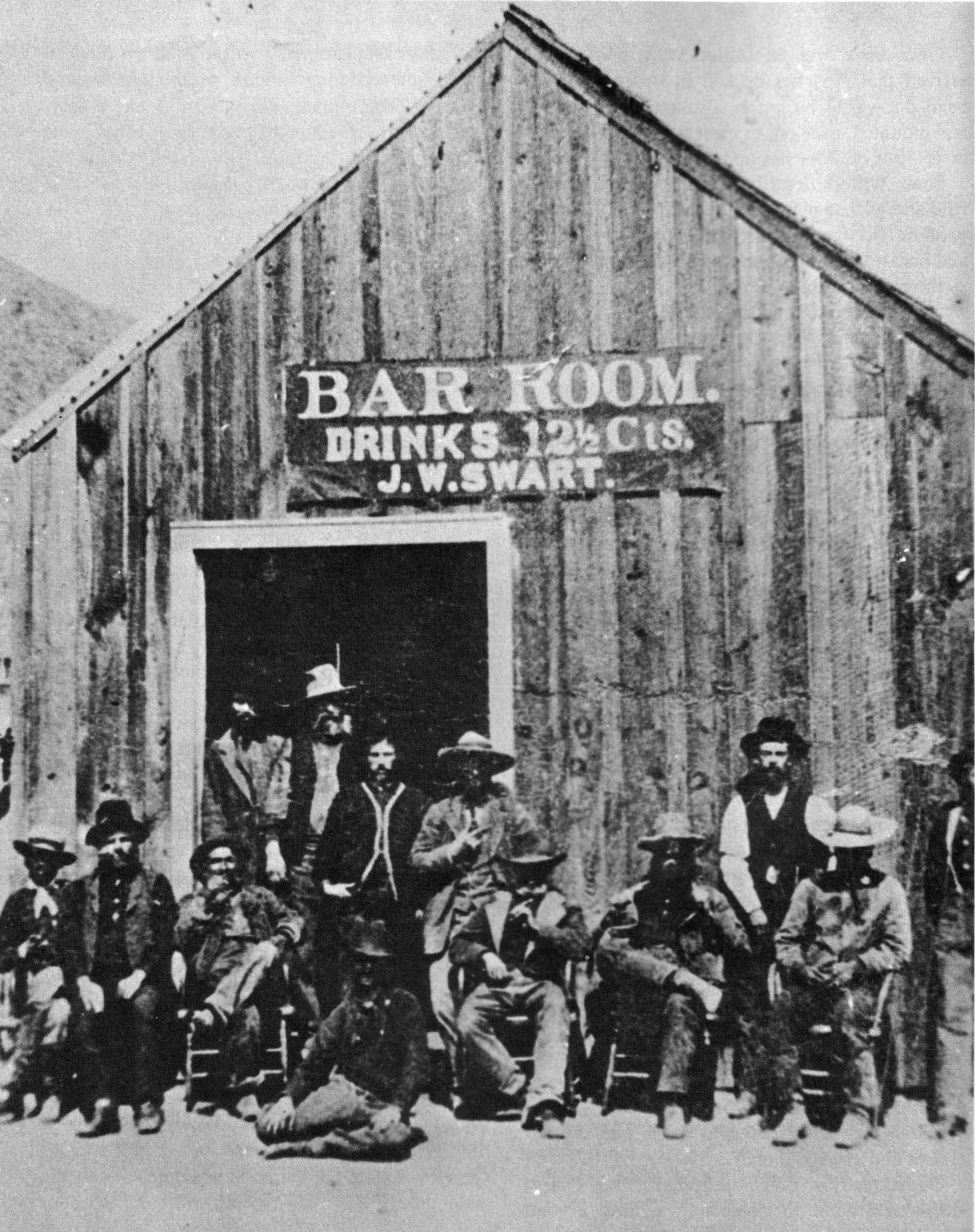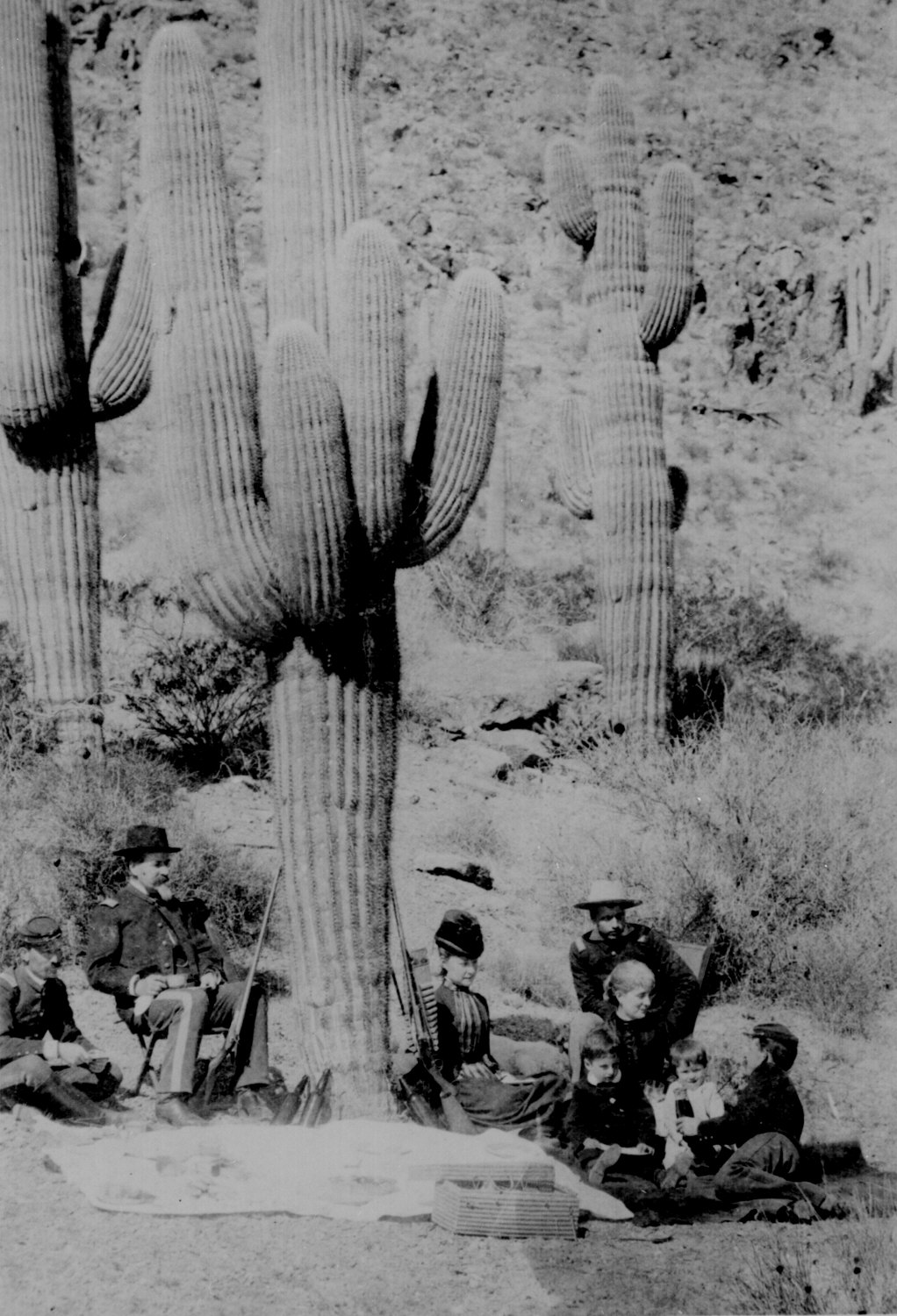|
Phineas Clanton
Phineas Fay Clanton (December 1843 – January 5, 1906) was the son of Newman Haynes Clanton and the brother of Billy and Ike Clanton. He was witness to and possibly played a part in a number of illegal activities during his life. He moved frequently in his early life from Missouri to California and to Arizona. Their father was implicated in the ambush and murder of a number of Mexican smugglers in July 1881. The following month he was killed by Mexican Rurales. Phin's brother Ike Clanton had an ongoing series of conflicts with Deputy U.S. Marshal Virgil Earp and was accused of cattle rustling among other things. Phin and his brothers developed bitter and angry feelings for the Earps. During the Gunfight at the O.K. Corral on October 26, 1881, Ike escaped unharmed but their brother Billy was killed. Ike and Phin were accused of attempting to murder Virgil in December and assassinating Morgan Earp two months later, but Cowboy friends vouched for their presence in Contention, ... [...More Info...] [...Related Items...] OR: [Wikipedia] [Google] [Baidu] |
Callaway County, Missouri
Callaway County is a county located in the U.S. state of Missouri. As of the 2020 United States Census, the county's population was 44,283. Its county seat is Fulton. With a border formed by the Missouri River, the county was organized November 25, 1820, and named for Captain James Callaway, grandson of Daniel Boone. The county has been historically referred to as "The Kingdom of Callaway" after an incident in which some residents confronted Union troops during the U.S. Civil War. Callaway County is part of the Jefferson City, Missouri, Metropolitan Statistical Area. Vineyards and wineries were first established in the area by German immigrants in the mid-19th century. Among the first mentioned in county histories are those around the southeastern Callaway settlement of Heilburn, a community neighboring Portland, on the Missouri River. Since the 1960s, there has been a revival of winemaking there and throughout Missouri. The Callaway Nuclear Generating Station is located in C ... [...More Info...] [...Related Items...] OR: [Wikipedia] [Google] [Baidu] |
Ventura, California
Ventura, officially named San Buenaventura (Spanish for "Saint Bonaventure"), is a city on the Southern Coast of California and the county seat of Ventura County. The population was 110,763 at the 2020 census. Ventura is a popular tourist destination, owing to its historic landmarks, beaches, and resorts. Ventura was founded by the Spanish in 1782, when Saint Junípero Serra established Mission San Buenaventura. Following the Mexican secularization of the Californian missions, San Buenaventura was granted by Governor Pío Pico to Don José de Arnaz as Rancho Ex-Mission San Buenaventura and a small community arose. Following the American Conquest of California, San Buenaventura eventually incorporated as a city in 1866. The 1920s brought a major oil boom, which along with the post–World War II economic expansion, significantly developed and expanded Ventura. History Archaeological discoveries in the area suggest that humans have populated the region for at least 10,000 ... [...More Info...] [...Related Items...] OR: [Wikipedia] [Google] [Baidu] |
Skeleton Canyon Massacre
:''These events should not be confused with the Skeleton Canyon Shootout in 1896.'' The Skeleton Canyon massacres refer to two separate attacks on Mexican citizens in 1879 and 1881. Skeleton Canyon is located in the Peloncillo Mountains (Hidalgo County), which straddles the modern Arizona and New Mexico state line border. This canyon connects the Animas Valley of New Mexico with the San Simon Valley of Arizona. 1879 Skeleton Canyon massacre The first Skeleton Canyon Massacre occurred in 1879 when a group of Mexican Rurales were ambushed by cattle rustlers. In July 1879, several rustlers attacked a rancho in northern Sonora, killing several of the inhabitants. After the attack on the rancho, the survivors reported the attacks to Commandant Francisco Neri, who sent out a detachment of Rurales, including Captain Alfredo Carrillo. The Rurales crossed the border into Arizona. As they entered Skeleton Canyon, shots were fired against them. Of the large group that crossed, only three ... [...More Info...] [...Related Items...] OR: [Wikipedia] [Google] [Baidu] |
Tombstone, Arizona
Tombstone is a historic city in Cochise County, Arizona, United States, founded in 1877 by prospector Ed Schieffelin in what was then Pima County, Arizona Territory. It became one of the last boomtowns in the American frontier. The town grew significantly into the mid-1880s as the local mines produced $40 to $85 million in silver bullion, the largest productive silver district in Arizona. Its population grew from 100 to around 14,000 in less than seven years. It is best known as the site of the Gunfight at the O.K. Corral and presently draws most of its revenue from tourism. It also houses the highest-rated brewery in the state of Arizona. The town was established on Goose Flats, a mesa above the Goodenough Mine. Within two years of its founding, although far distant from any other metropolitan area, Tombstone had a bowling alley, four churches, an ice house, a school, two banks, three newspapers, and an ice cream parlor, alongside 110 saloons, 14 gambling halls, and numerous ... [...More Info...] [...Related Items...] OR: [Wikipedia] [Google] [Baidu] |
Boomtown
A boomtown is a community that undergoes sudden and rapid population and economic growth, or that is started from scratch. The growth is normally attributed to the nearby discovery of a precious resource such as gold, silver, or oil, although the term can also be applied to communities growing very rapidly for different reasons, such as a proximity to a major metropolitan area, huge construction project, or attractive climate. First boomtowns Early boomtowns, such as Leeds, Liverpool, and Manchester, experienced a dramatic surge in population and economic activity during the Industrial Revolution at the turn of the 19th century. In pre-industrial England these towns had been relative backwaters, compared to the more important market towns of Bristol, Norwich, and York, but they soon became major urban and industrial centres. Although these boomtowns did not directly owe their sudden growth to the discovery of a local natural resource, the factories were set up there to take a ... [...More Info...] [...Related Items...] OR: [Wikipedia] [Google] [Baidu] |
Silver
Silver is a chemical element with the Symbol (chemistry), symbol Ag (from the Latin ', derived from the Proto-Indo-European wikt:Reconstruction:Proto-Indo-European/h₂erǵ-, ''h₂erǵ'': "shiny" or "white") and atomic number 47. A soft, white, lustrous transition metal, it exhibits the highest electrical conductivity, thermal conductivity, and reflectivity of any metal. The metal is found in the Earth's crust in the pure, free elemental form ("native silver"), as an alloy with gold and other metals, and in minerals such as argentite and chlorargyrite. Most silver is produced as a byproduct of copper, gold, lead, and zinc Refining (metallurgy), refining. Silver has long been valued as a precious metal. Silver metal is used in many bullion coins, sometimes bimetallism, alongside gold: while it is more abundant than gold, it is much less abundant as a native metal. Its purity is typically measured on a per-mille basis; a 94%-pure alloy is described as "0.940 fine". As one of th ... [...More Info...] [...Related Items...] OR: [Wikipedia] [Google] [Baidu] |
Ed Schieffelin
Edward Lawrence Schieffelin (1847–1897) was an Indian scout and prospector who discovered silver in the Arizona Territory, which led to the founding of Tombstone, Arizona. He partnered with his brother Al and mining engineer Richard Gird in a handshake deal that produced millions of dollars in wealth for all three men. During the course of Tombstone's mining history, about US $85,000,000 in silver was produced from its mines. Early life Ed Schieffelin was born in a coal-mining region of Wellsboro, Pennsylvania, the son of a prominent New York and Pennsylvania family, in 1847. His great-grandfather Jacob Schieffelin, Sr., born in 1757, joined the Loyalist army and served as Henry Hamilton's secretary during the Revolutionary War. Schieffelin was captured in 1779 and held prisoner in Williamsburg, Virginia. He escaped to Canada, where in 1780 he was appointed a lieutenant in the Queen's Rangers by Henry Clinton. He spent time in Montreal and Detroit, before returning to N ... [...More Info...] [...Related Items...] OR: [Wikipedia] [Google] [Baidu] |
Adobe
Adobe ( ; ) is a building material made from earth and organic materials. is Spanish for ''mudbrick''. In some English-speaking regions of Spanish heritage, such as the Southwestern United States, the term is used to refer to any kind of earthen construction, or various architectural styles like Pueblo Revival or Territorial Revival. Most adobe buildings are similar in appearance to cob and rammed earth buildings. Adobe is among the earliest building materials, and is used throughout the world. Adobe architecture has been dated to before 5,100 B.C. Description Adobe bricks are rectangular prisms small enough that they can quickly air dry individually without cracking. They can be subsequently assembled, with the application of adobe mud to bond the individual bricks into a structure. There is no standard size, with substantial variations over the years and in different regions. In some areas a popular size measured weighing about ; in other contexts the size is weighi ... [...More Info...] [...Related Items...] OR: [Wikipedia] [Google] [Baidu] |
Charleston, Arizona
Charleston is a ghost town in Cochise County in the southeastern part of the U.S. state of Arizona. It was occupied from the late-1870s through the late-1880s, and was located in what was then known as the Arizona Territory. Located on the west bank of the San Pedro River, Charleston's economy was based on milling silver ore mined from nearby Tombstone in the community of Millville, located directly across the river. Geography Charleston is located at (31.635833, -110.1725), on the west bank of the San Pedro River, about southwest of Tombstone. Millville is located directly across the river, on the east bank. History Charleston was originally settled as a residence for the mill workers in Millville, on the opposite bank of the San Pedro River, where two mills were built to process ore from the silver mines of nearby Tombstone. The mills were constructed in Millville due to a lack of water, needed for refinement, in the immediate vicinity of Tombstone. The mills, one opera ... [...More Info...] [...Related Items...] OR: [Wikipedia] [Google] [Baidu] |
San Pedro River (Arizona)
The San Pedro River is a northward-flowing stream originating about south of the international border south of Sierra Vista, Arizona, in Cananea Municipality, Sonora, Mexico. The river starts at the confluence of other streams (Las Nutrias and El Sauz) just east of Sauceda, Cananea. Within Arizona, the river flows north through Cochise County, Arizona, Cochise County, Pima County, Arizona, Pima County, Graham County, Arizona, Graham County, and Pinal County, Arizona, Pinal County to its confluence with the Gila River, at Winkelman, Arizona. It is the last major, undammed desert river in the Southwestern United States, American Southwest, and it is of major ecological importance as it hosts two-thirds of the avian diversity in the United States, including 100 species of breeding birds and almost 300 species of migrating birds. History The first people to enter the San Pedro Valley were the Clovis people who hunted mammoth here from 10,000 years ago. The San Pedro Valley has the ... [...More Info...] [...Related Items...] OR: [Wikipedia] [Google] [Baidu] |
Camp Thomas (Arizona)
Camp Thomas was a United States Regular Army training facility located in North Columbus, Ohio (now Columbus), during the American Civil War. It was primarily used to organize and train new infantry regiments for service in the Western Theater. Establishment With the outbreak of the Civil War and the bombardment of Fort Sumter in South Carolina, President Abraham Lincoln called for 100,000 volunteers to put down the growing rebellion. Colonel Henry B. Carrington had been commissioned to raise troops for the expanded United States Army in Ohio, Indiana, and Pennsylvania. In July 1861, he established a training camp on the Solomon Beers farm along the Delaware Road, four miles north of the city of Columbus. He named the new facility "Camp Thomas" in honor of Colonel Lorenzo Thomas, the Adjutant General of the U.S. Army. Camp Thomas augmented the nearby Camp Chase, a similar military camp established for the state's regiments raised for the volunteer Union Army. The ... [...More Info...] [...Related Items...] OR: [Wikipedia] [Google] [Baidu] |
Clantonville, Arizona
Fort Thomas ( apw, Gowąh Golgai Gohoshé) is a census-designated place in Graham County, Arizona, United States. Its population was 319 as of the 2020 census. The community has an elementary school and a high school. It is part of the Safford Micropolitan Statistical Area. Fort Thomas has a ZIP code of 85536. Geography Fort Thomas is at , at an elevation of 2822 feet above sea level. Climate Fort Thomas has a borderline semi-arid climate (Köppen ''BSh''/''BSk'') bordering upon an arid climate (''BWh''/''BWk'') characterised by very hot summers and winters with mild days and cold nights. Although frosts are frequent during the winter, occurring on an average of 60.2 nights during December, January and February, snow is exceptionally rare with a median of zero and a mean of . Daily temperatures are comfortable during winter – only 5.6 days do not top – but heat up rapidly as summer approaches, with half of all days by May topping and 35.5 days topping during an ave ... [...More Info...] [...Related Items...] OR: [Wikipedia] [Google] [Baidu] |
_(cropped).jpg)
.jpg)
.jpg)


_1.jpg)


